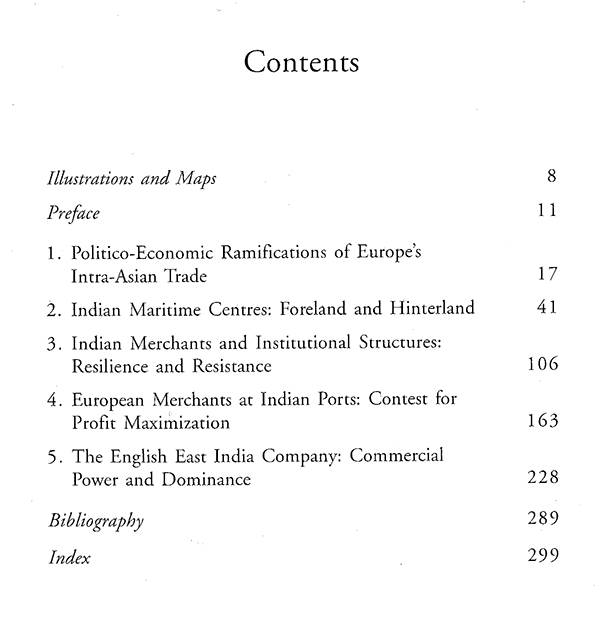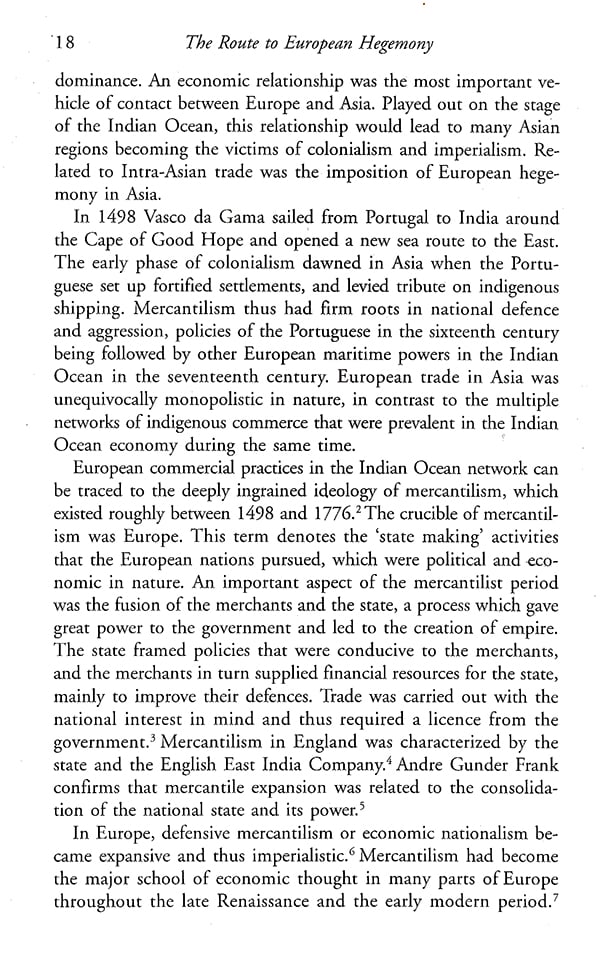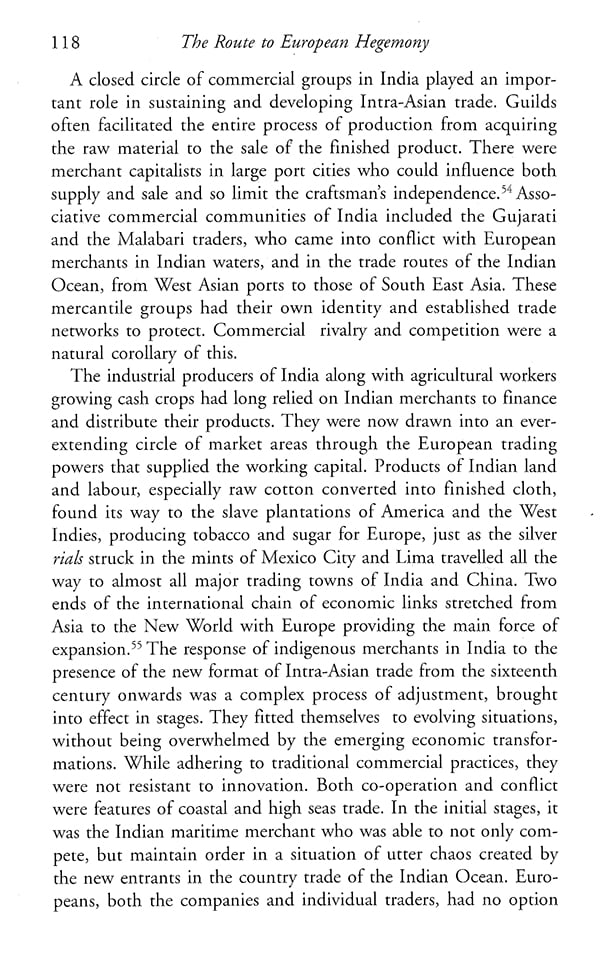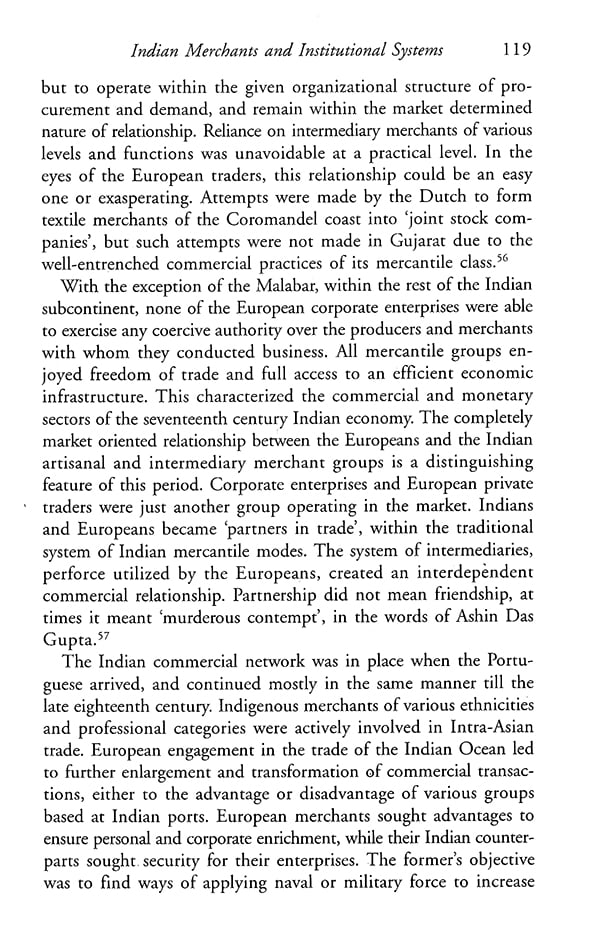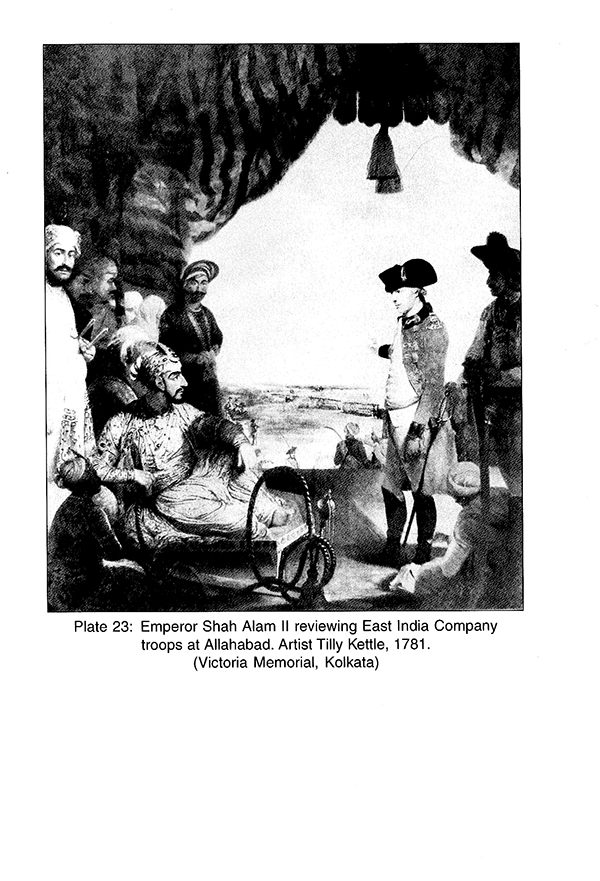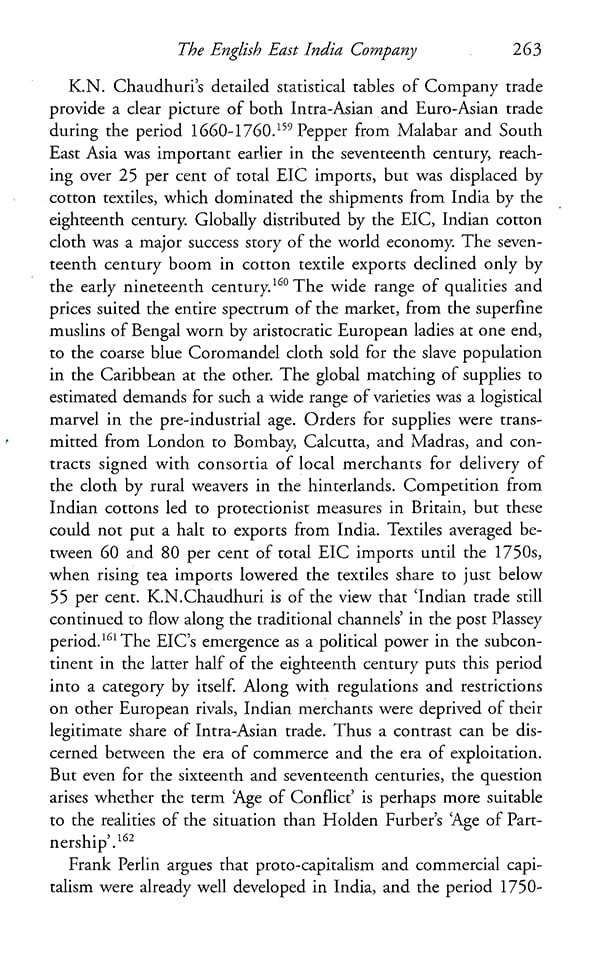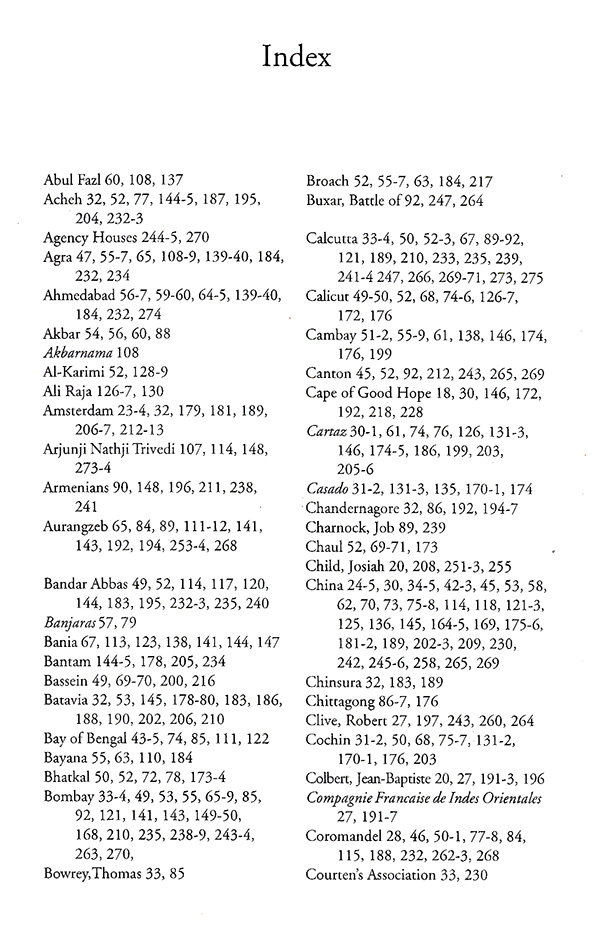
The Route to European Hegemony (India's Intra-Asian Trade in the Early Modern Period- Sixteenth to Eighteenth Centuries)
Book Specification
| Item Code: | NAZ122 |
| Author: | Ruby Maloni |
| Publisher: | Manohar Publishers and Distributors |
| Language: | English |
| Edition: | 2021 |
| ISBN: | 9789390035960 |
| Pages: | 305 (23 Color Illustrations) |
| Cover: | HARDCOVER |
| Other Details | 9.00 X 5.80 inch |
| Weight | 550 gm |
Book Description
The advent of the Europeans was crucial in transforming the contours of Maritime Asia. The commercial situation in the Indian Ocean was impacted in many ways over the longue duree from the sixteenth to the eighteenth centuries. To offset the adverse balance of trade and to maximize profits, the Europeans imposed their own coercive and monopolistic systems along the existing trade routes. Systematic exploitation of economic opportunities in Asia by Europeans began with the coming of the Portuguese, followed by other European maritime powers. It culminated with Britannia ruling the Asian waters with warships and a strong merchant marine.
A study of the operational and ideological motivations that propelled the European powers' activities in the Indian Ocean can help to construct a coherent interpretation of the foundations of empire that were being laid, at first insidiously and later, aggressively. The mechanism and implications of Europe's sustained engagement in Intra-Asian trade, need to be analysed as an essential context to the establishment of colonial empires. India, concentric to Indian Ocean trade, became the 'Jewel in the Crown', its rich resources a major source of the power and pelf of the British Empire.
Ruby Maloni is former Head and Professor of the Department of History, Mumbai University. She is an alumnus of both Calcutta and Mumbai Universities. She taught Medieval Indian history at Mumbai University for more than thirty years. Her research focuses on the Indian Ocean and maritime trade, with special emphasis on the history of Gujarat. Her published works include European Merchant Capital and the Indian Economy and Surat: Port of the Mughal Empire.
The advent of Europeans was crucial in transforming the contours of Maritime Asia. The commercial situation in the Indian Ocean was impacted in many ways over the longue duree of the sixteenth to the eighteenth centuries. To offset the adverse balance of trade and to maximize profits, the Europeans imposed their own coercive and monopolistic systems along existing trade routes, some long established and some newly forged. Systematic exploitation of economic opportunities in Asia by Europeans began with the coming of the Portuguese, followed by other European maritime powers. It culminated with Britannia ruling the waves of Asian waters with warships and a 'strong merchant marine, and Britain becoming a global hegemonic power.
The operational and ideological motivations that propelled the European powers' activities in the competitive environment of the Indian Ocean can help to construct a coherent interpretation of the foundations of empire that were being laid, at first insidiously and later aggressively. The mechanism and implications of Europe's sustained engagement in Intra-Asian commercial exchange, best described as 'a very profitable and advantageous trade',' need to be analysed as an essential context to the establishment of colonial empires. India, concentric to Indian Ocean trade, became the 'Jewel in the Crown', its rich resources a major source of the power and pelf of the British empire.
This work covers the three centuries between Vasco da Gama's arrival in 1498 and the consolidation of the English East India Company's commercial and political dominance by the end of the 1700s. The pre-imperial age has been understood as an 'age of partnership' or an 'age of competition' when Europe and Asia vied commercially on even terms. The time period witnessed dramatic changes in the commercial patterns of the Indian Ocean. In a methodological and geographical perspective, economic historians have seen the Indian Ocean as a space of trade and production. Intra-Asian trade influenced the rise and decline of ports along sea routes. Economic exchanges centred around these ports constituted the transnational and global trade network. Asia was perhaps unique in the richness and complexity of its commercial links and commodity movements, which bridged the gulfs of culture and distance, and drew the region into the global economy.
**Contents and Sample Pages**